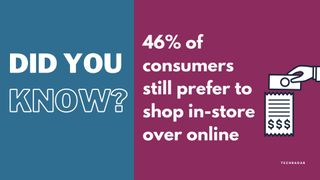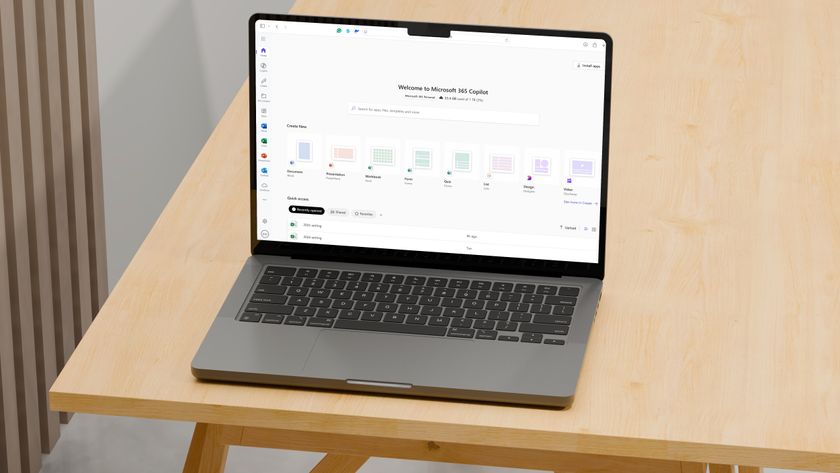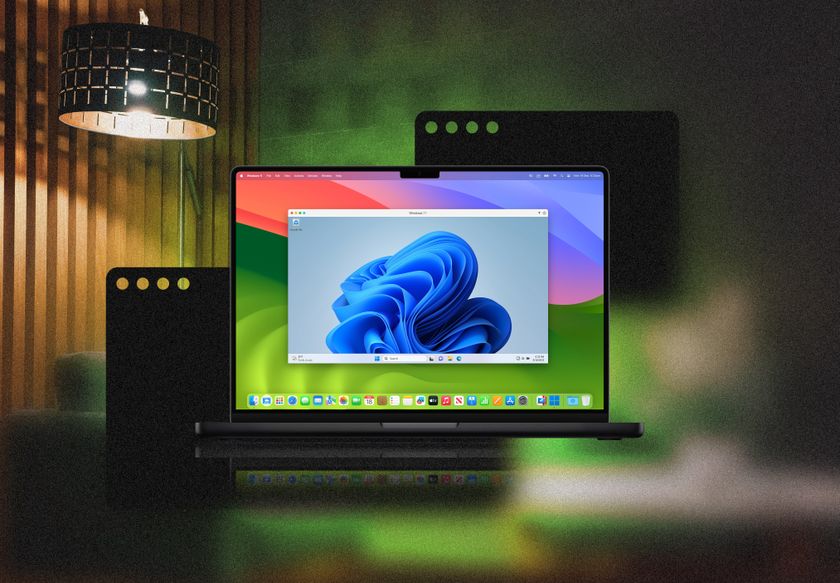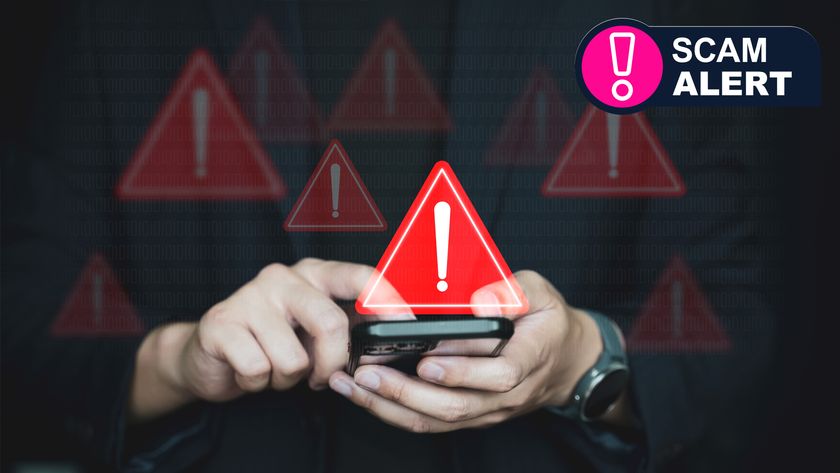10 Omnichannel retail strategy business best practices
Learn how to achieve omnichannel retail success using technologies like POS systems, email, and SMS.

- What is omnichannel retail?
- What are the benefits of omnichannel retail?
- What are the best practices for omnichannel retail?
- Building buyer personas
- Perfect your mobile response
- Emphasize consistency
- Sharpen your social presence
- Embrace SMS marketing
- Email for omnichannel retail
- Enhance in-person interactions
- Provide real-time updates
- Cross-channel integration
- Help customers serve themselves
Omnichannel retail has become the normalized way of shopping today with customers switching between multiple touch points. In the past, customers would simply walk into a brick-and-mortar store to browse and purchase, and that was the end of the story. Now, shoppers have mobile phones, iPads, and laptops to help them compare products and services. They may check out a product in a physical store but end up buying it online or vice-versa.
Shopping is no longer a linear journey. As a retailer you can make life simpler for your customers and employees by using the best Point of Sale (POS) systems available to achieve a seamless omnichannel retail experience. Along with a POS system, you can follow many best practices to perfect your omnichannel strategy.
Omnichannel retail explained
What is omnichannel retail?
Today consumers use an average of almost six touch points with nearly 50% regularly using more than four.
Knexus
Omnichannel retail strategy makes use of multiple sales channels to interact with the same customer. Customers using omnichannel retail solutions can seamlessly navigate between each shopping touchpoint before they make a purchase — and that’s critical. Why?
✓ Your customers have a great shopping experience that's easy to engage with and buy from every time
✓ Your brand is able to offer a flexible, personalized service and build customer loyalty across different sales channels
Benefits of omnichannel retail
Benefits of omnichannel retail
The number of touch points needed to convince a consumer keeps increasing over the years. In 2000, the buyer just needed two touchpoints, but by 2015, the number was estimated to be almost six, and recently marketers have upped the number to eight.
As more customers are interacting with multiple touchpoints, businesses are compelled to create an omnichannel strategy. But the good news is that the effort pays.
Are you a pro? Subscribe to our newsletter
Sign up to the TechRadar Pro newsletter to get all the top news, opinion, features and guidance your business needs to succeed!
According to one study, marketers using three or more channels in their marketing campaigns earned a 90% higher customer retention rate and 250% higher engagement and purchase rates. Such omnichannel customers also spent 13% more than others.
Adobe found that companies with highly personalized omnichannel customer engagement strategies enjoyed a 10% increase in average order values over a period of three years. In particular, they demonstrated improved targeting and messaging to high value segments.
Related reading:
The future of the omnichannel experience
Why Twitter and an omnichannel customer service strategy is vital to businesses
Using digital to build resilience through new retail experiences
Best practices for omnichannel retail
Best practices for omnichannel retail
The benefits of a unified retail strategy across online and offline channels are out there to see. But you cannot move forward with a half-hearted omnichannel strategy. You need to be cutting-edge about it and refine your practices to beat competition and cater to modern day consumers who exhibit complex shopping behaviors. Let’s review such practices.
Building buyer personas
1. Create buyer personas
Understanding your customer profile is key to your omnichannel retail strategy. This includes getting insight into their preferences, purchasing habits, priorities, and how they interact across different channels.
To gather this data, ask your customers the following questions:
- What criteria are you looking for before you make a purchase?
- What channels do you use to find information?
- How do you discover new products?
- What channels and devices do you use when making a purchase?
- Are there certain channels you find easier to navigate? Why?
- What helped convince you to make or not make a purchase?
After you have these answers, it's easier to determine the channels your brand needs to have a strong presence on, and you can chart out the consumer decision-making funnel.
For instance, if you discover that most of your customers start their product research on Google, you’ll want to invest in paid and organic search when marketing your products. On the other hand, if you know that many of your shoppers are Instagrammers, then you can come up with ways to make shopping easier on that platform.
Mobile shopping optimization

2. Perfect your mobile response
Mobile buyers account for 60.9% of the U.S. population, and by 2024, “approximately 187.5 million U.S. users will have made at least one purchase via web browser or mobile app on their mobile device, up from 167.77 mobile U.S. buyers in 2020.”
With mobile devices at the center of the buying process, your omnichannel retail strategy should adopt a mobile-first mindset. 50% of customers will even switch loyalties when they don’t get the desired mobile experience.
Bottom line? Make sure that your website is friendly for mobile payments and optimized for a mobile user experience.
Cross-channel continuity
3. Emphasize consistency
A Harvard Business Review study of 46,000 shoppers found that 73% of participants used multiple channels during their customer journey. It’s important to design your cross-device sales presence, so customers get a consistent experience everywhere.
Also, make it easy for them to shift between devices without loss of information. The last thing you want is to halt the customer’s shopping progress when they change devices. Or worse, you don’t want them frustrated when they're unable to find what they need due to layout changes and glitches.
To provide a consistent omnichannel experience, prioritize user experience in all devices and remember browsing history so they don’t have to start all over again when they shift from one device to another.
Optimize social media

4. Sharpen your social presence
It’s hard to be everywhere all the time, but no omnichannel strategy is complete without having a social media presence. And it’s great for sales, as studies show that sales reps with high social network activity achieve 45% more sales opportunities, and are 51% more likely to hit their sales quotas.
On some channels, customers can—and will—buy directly from your business's social accounts. Research in which of these your customers spend the most of their time. Are they active Twitter users? Is Facebook more effective? Would Instagram be a better use of your time?
Once you narrow that down, engage, engage, engage. Customers like attention. A Salesforce research shows that two-thirds of consumers are likely to switch brands if they’re treated like a number instead of an individual. So, engage with your loyal customer community, welcome new followers by reacting and replying to comments, and create unique social content.
Omnichannel SMS marketing
5. Focus on effective SMS marketing
Given that 5 billion people send and receive SMS messages globally and SMS open rates are as high as 98%, it’s safe to say this should be part of your omnichannel strategy. Surprisingly, 61% of marketers still don’t use SMS—an opportunity for you to tap into.
Not only during marketing, but you can also use SMS as a tool to keep your existing customer in the loop on all communications.
Let’s say a customer orders an item online. After the order is placed, they receive a text message that contains the purchase information. Once their order is ready for pickup from in-store, they receive an SMS notification again. At all points, SMS messages help them keep track of their position in the buying journey.
Email for omnichannel retail

Seamlessly integrate your social media channels and website with email.
6. Don’t forget about email
Email is a highly effective form of marketing that shouldn’t be overlooked. Around 4.03 billion people in the world use email, and the average ROI from email marketing is $42 for every dollar spent. No wonder then that 87% of marketers use email as a key content distribution channel.
Research also indicates that segmented emails perform better than blasting mass emails. Hence, to integrate emails into your omnichannel program, categorize your audience based on their needs and preferences, and then send out highly personalized content. According to a McKinsey report, “83 percent of customers say they want their shopping experience to be personalized in some way” and “effective personalization can increase store revenues by 20 to 30 percent.”
Email also allows you to promote your social media channels and website, which can increase your follower count and site visitors, and enable your marketing efforts to work cohesively.
Bridge online and offline interactions
71% of customers expect to be able to view store inventory online and 50% expect to be able to order online and pick up in store.
Accenture
7. Enhance in-person interactions
Yes, the world may appear to have completely moved on to email, SMS, mobile, and tablets. But many consumers still shop in brick-and-mortar stores. One report shows that 46% of consumers still prefer to shop in-store over online. Creating positive in-person shopping experiences are great opportunities for brands to build long-term relationships with customers.
To make this possible, you need to equip store employees with access to data about customers’ buying history, interests, and reasons for visiting a location. This helps them meet customer needs easily and provide a memorable shopping experience.

Utilise real-time updates
8. Provide shoppers with real-time stock updates
As much as you invest effort to gather data about your shoppers, empower them with data about you. Allow them to see everything from order status to search history to inventory in multiple locations. If they look at a product on your website, they should be able to find out whether it’s available in a nearby brick-and-mortar store.
According to a survey, 60% of Gen Z shoppers aged 18 to 22 always or sometimes check a store’s in-store inventory availability online before going to make a purchase.
In changing times when options such as buy-online-pickup-in-store are becoming popular, this integration between inventory and ecommerce is crucial for a true omnichannel experience. Else, you run into the risk of disappointing customers who go through the whole buying process, only to find out what they want isn’t available.
Cross-channel integration
9. Keep your systems tightly integrated
You can’t provide a seamless customer-facing experience if your retail systems are a mess behind-the-scenes. One of the most important omnichannel best practices to implement is to ensure that your retail apps and solutions — including your POS system, online shopping cart, and email marketing provider — are tightly integrated.
Connecting these systems with each other leads to a streamlined retail experience on both the customer side and the admin end.
For instance, if you’re planning to run a loyalty program that lets shoppers earn and redeem points on all channels, then your marketing app should be connected to both your point of sale system and ecommerce platform. That way, you and your customers can effectively track the points and rewards that they’ve earned regardless of whether they’re shopping in-store, online, or on their mobile device.
To that end, choose retail solutions that can plug into each other. Most modern POS systems and ecommerce platforms have existing integrations, so leverage them whenever possible. Depending on the solution you can also integrate different apps through services like Zappier.
Encourage self-service
10. Encourage self-service
One of the fastest ways to enhance the customer experience across all your retail channels, is to put them at the heart of it. Let's break down how you can do that.
Give customers the tools to support themselves
This could be via an online customer community, such as a forum on your website or a dedicated Facebook page, where your new and experienced customers can collectively help each other out. You'll need a moderator on hand though, to 1) ensure the responses being given to queries are accurate, and 2) offer additional order support or sales help where the customer community are unable to respond.
While this won't replace your customer service team, the great thing about a self-serving community is it's also a way to quickly identify and improve upon customer pain points. You can address these issues and how you've solved them directly in your marketing material.
Separately, think about using an automated virtual chat assistant on your website. The answer database may take some time to build out, but it'll free up your customer care lines for serious queries that require urgency.
Let your customer shop everywhere and anywhere
Because customers browse and purchase from multiple locations and devices, it's important to empower them to buy from any channel so you never miss out on sales. An branded app that works across devices and can track customer shopping patterns is an excellent way to do this. You can also pop in a helpful FAQ section and reward customer with loyalty points each time refer a friend to the app.
Ready to move forward with omnichannel retail?
Your needs will vary depending on your unique business but by following the tips above, tailoring them to your specific situation, and creating an omnichannel strategy, your business will be better equipped to stay on target in terms of meeting — and exceeding — your goals.
Francesca has over 10 years experience as a B2B writer and content marketeer, creating content about retail, ecommerce, technology, and SMB. And has written for websites such as Entrepreneur.com, The Huffington Post, Lifehack, MediaBistro, Independent Retailer, Retail Touchpoints, and many more.













